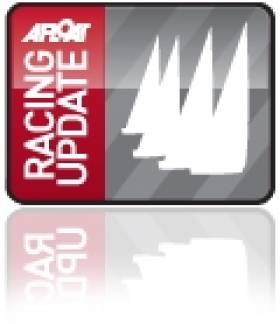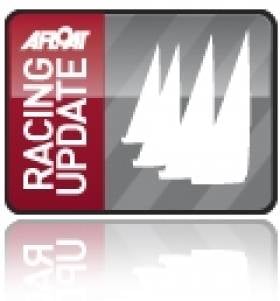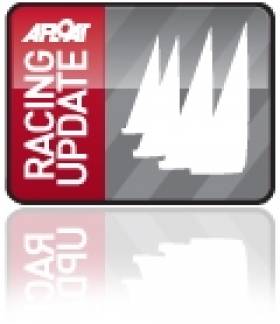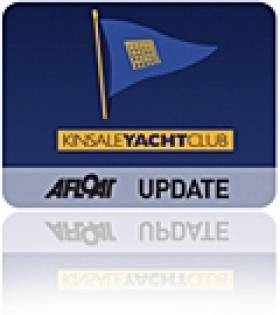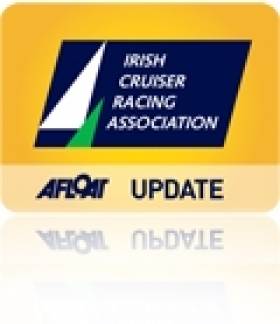Displaying items by tag: Cup
Eight Teams Advance to Nations Cup Semifinals
Friday's conditions—a light southeasterly breeze that forced race officials to delay the first start until about 1 p.m.—were a marked change from the previous two days of racing that featured moderate to heavy winds and choppy seas.
In the open division, the semifinal berth came down to the wire in a race between Haddad (crew Mario Trindade, Victor Demaison) and Shawn Bennett (USA) who went into the final match tied with two wins each. Przemek Tarnacki (POL) finished with one win and Peter Wickwire (CAN) was winless in the round.
Goncalves (crew Mariana Lobato, Diane Neves) went 3-0 in the women's division repechage round robin. Genny Tulloch (USA) won two races, Juliana Senfft (BRA) won one race and Ru Wang (CHN) was winless in the round.
Following the repechage, sail-offs to determine placing from fifth down were held, and the most exciting race of the day was held during this round when Bennett and Tarnacki battled it out. Bennett drew a foul in the prestart and managed to pass Tarnacki going upwind. At the top mark, the teams went into a dial-up that carried them well past the mark. Bennett was able to break free and lead for the rest of the race, but still had to complete his penalty turn. His team was managed to get the turn in right at the line and cross just feet in front of Tarnacki for the win.
Jason Bemis, President of Sail Sheboygan, which is hosting the event at its facility optimized for match racing, said the competition has been even better than anticipated.
"We've had spectacular weather all week that has made for some great competition," Bemis said. "Today we had a little bit of a slow start but the breeze finally switched to the southeast and built for some great afternoon racing. Tomorrow's forecast looks good and we expect a large spectator fleet to be on hand for some fierce competition in the semifinals and finals."
Placements for those not moving onto the semifinals are:
Open Division (sailed in Sonars):
5th Shawn Bennett (USA, crew Dave Perry, Craig Healey)
6th Przemek Tarnacki (POL, crew Lukasz Wosinski, Maciej Zieminski)
7th Stratis Andreadis (GRE, crew Stelios Sotiriou, Theodoros Polychrondis
8th Peter Wickwire (CAN, crew Tim Bishop, Matt Christie)
9th Yasar Celal Tumse (TUR, crew Canberk Karahan, Berk Can Biren)
Women's Division (sailed in Elliott 6m's):
5th Genny Tulloch (USA, crew Alice Manard, Jenn Chamberlin)
6th Juliana Senftt (BRA, crew Gabriela Sa, Luciana Kopschitz)
7th Ru Wang (CHN, crew Pan Ting Ting, Li Xiao Ni)
8th Sharon Ferris-Choat (CAN crew Caroline Kaars Sijpesteijn, Joanne Prokop)
9th Katarzyna Pic (POL Antonina Zoltowska, Monika Kordek)
10th Dominique Provoyeur (RSA Penny Alison, Caitlin Moore)
Racing continues Saturday with the start of the semifinal round.
Kenefick to Skipper Cork Entry at Student Yachting World Cup
Twenty three year old George, who will graduate with an Honours Degree this coming November, is now training hard with fellow crewmembers, including Joe Bruen and Kevin Goulding. Joe competed successfully in the 1720 Europeans this year and with George, sailed "Tiger" to success at the IRC Nationals in Class 3.
CIT have enjoyed success previously at the Student Yachting World Championships in La-Trinite-sur Mer, France in 2008. It will be George's fourth time competing, having represented CIT for each of his undergraduate years.
Royal Cork Crew Moves up to Sixth at New York Yacht Club Invitational
Ireland's Royal Cork Yacht Club moved up two places overall in the Rolex New York Invitational Cup yesterday after scoring 3,10 and 11 in the 22 boat fleet yesterday. The Anthony O'Leary skppered boat is just three points behind Japan who ties for fourth place after six races with the Newport harbour team on 48 points. Third place is Annapolis Yacht Club on 43 points.
Returning to upper Narragansett Bay for the second day of the fixture has proven beneficial for at least one of the 22 yacht club teams – Royal Canadian Yacht Club – which again displayed remarkable consistency on the race course. And in a repeat of yesterday's prevailing theme of tight competition, today's three races were won by three different clubs which means that there have been no duplicate winners thus far in the six-race series.

A keen start yesterday. Royal Cork is bow number three. Photo:Dan Nerney/Rolex
"We were probably the biggest movers," said Peter McChesney, helm for the Annapolis Yacht Club team who has only sailed in Newport a handful of times previously, including the the New York Yacht Club Invitational Cup U.S. Qualifying Series in 2010 in which the AYC team finished second to earn the opportunity to race in this event. AYC was 10th overall after yesterday's first day of racing, and moved up to third overall with 43 points after finishes of 6-1-3 today. "We just got off the line better today in every race, and gave our tactician [John Torgerson] the opportunity to make good decisions. If you get a good start it's easier to make those decisions. Our tactician took what we gave him and did a great job of calling tactics, and the crew work was essentially flawless. Everything just went our way."
The exciting conditions seen today on Narragansett Bay have also proven why Newport remains such a unique place to sail. "Where else can you sail in 20 knots of breeze and have the seas be this flat?," said Chip Whipple, timmer on the New York Yacht Club team. "It really is an anomaly. When you have as much breeze as this [in the Med] you're sailing in big seas and a lot of swell. And in northern Europe you have the cold water and big seas, breaking waves. Being as protected as we are here it's just an extremely fantastic place to sail, and the boats can't sail any faster because they are absolutely optimized for the conditions."
The Royal Canadian Yacht Club (RCYC) team has retained the overall lead position after adding finishes of 2-4-2 to yesterday's finishes of 2-1-4 for 15 points. When they won the second race on the first day of the contest, they were given the Rolex gold spinnaker to fly in the subsequent race. And, as overall standings leader, RCYC carried the golden chute for all of today's races, and will continue that way when racing resumes tomorrow.
"We had to bail on two starts," said RCYC helm Terry McLaughlin after racing today, explaining that the RCYC team was forced to tack in both instances but the moves wound up working in their favor. "It was good breeze most of the day and we were going well. We're trying to do all the fundamentals well and not make mistakes." With eleven races planned, and tough competition, McLaughlin knows all to well that the 13-point lead RCYC currently enjoys can disappear in a hurry. "We had a good battle with NYYC in the last race, caught up to them on the last leg. It was close, but they beat us by three boat lengths."
"The last race was a lot of fun," said Ken Colburn, skipper of the New York Yacht Club team when summing up their win of the final race of the day. NYYC now stands second overall with 28 points, 13 points behind RCYC. "We had a great start, found ourselves in a clean lane and just were able to get in the proper groove. RCYC was there every inch of the race. We stayed together . . . gapped the fleet . . . for both of us it was just a fabulous race." Emphasizing that there was still a lot of racing to come, Colburn noted that, as anticipated, the quality and depth of the competition is remarkable. "Six winners in six races is indicative of how strong this fleet is overall."
Racing resumes today Thursday, September 15, with the warning signal for the first race scheduled for 1100. Competitors leave NYYC's Harbour Court for the race course at approximately 0930 each morning. The winner of the 2011 New York Yacht Club Invitational Cup presented by Rolex will be confirmed at the conclusion of racing on Saturday, September 17.
Byrne Named July's Sailor of the Month
In a fleet of 44, including many of the world's top boats, he had already put together a solid series as the final day arrived in the excellent sailing waters off Abersoch in North Wales.
But whether or not he and his crew of Adam Winkelmann and Pedro Andrade came home with bronze, silver or gold, hinged entirely on that last race.
Sailing the immaculate Jaguar, he logged the kind of race that, for most skippers, is the stuff of dreams.
Jaguar emerged clear from the starting melee to such good effect that by mid-race she had a clear lead of 200 metres, a comfortable gap that enabled Byrne to keep effective cover on any challengers, such that the real race was for second place as Jaguar powered on to finish an extraordinary three minutes ahead.
It was textbook stuff. In his winner's speech, Martin Byrne said the secret of it all was the shoreside commander, his wife Triona, who looked after logistics and paperwork, and ensured everything ran smoothly all week.
Irish sailing needs more Trionas.
The Byrne win gives a boost towards 2012, which in Ireland will be the Year of the Dragon. The Edinburgh Cup will be on Belfast Lough from July 4-8, while the historic Gold Cup is in Kinsale from September 8-14.
Ireland has won a dozen Edinburgh Cups, the most prolific victor being Tony O'Gorman who won six times between 1975 and 1984.
But only once has the Gold Cup been brought home, in 1947, when it was won by Eric Strain of Belfast Lough. Robin Hennessy was in the frame in 1971 but didn't quite clinch it, so an Irish win is overdue.
And, with the Gold Cup scheduled for Ostende in September, maybe we won't have to wait until next year.
Royal St. George Trio Win Dragon Edinburgh Cup
Royal St. George Commodore Martin Byrne lifted the Dragon Edinburgh Cup in Abersoch, North Wales tonight after a three way last battle for victory went the Dun Laoghaire crew's way in emphatic style.
The current Irish champions won the pivotal final race by over three minutes in breezes touching 25-knots to become the latest holder of the Edinburgh Cup; the British National Championship.

Martin Byrne steers to victory with crew Adam Winkelmann on spinnaker and Pedro Andrade. Photo: Fiona Brown
Celebrations will continue back in Dun Laoghaire tomorrow as the Dragon helmsman and his crew Adam Winkelmann and Portuguese sailmaker Pedro Andrade mark the significant victory that is a major shot in the arm for Irish Dragon sailing.
The 62-year old trophy is one of the most prestigious in the class along with the Gold Cup of this former Olympic keelboat. The 2012 Gold Cup is slated for Kinsale Yacht Club next year so the weekend win is a another fillip for the class here.
It all went down to the wire for the 43-strong fleet from Japan, Australia, Russia, Ireland and the UK on the final day of the 2011 Dragon Edinburgh Cup, supported by Aberdeen Asset Management, at the South Caernarvonshire Yacht Club in Abersoch. Going into the day Mikhail Muratov and Klaus Diederichs sailing with Irish Star keelboat pair Peter O'Leary and David Burrows were tied for the lead on 16 points, Martin Byrne was on 17 points, Julia Bailey counted 23 and Olga White 28. In the Corinthian fleet Richard Goodbody led Simon Brien by a single point with Patrick Gifford and Nigel Biggs both five points behind them.
There were four attempts at getting the final race, the sixth in the series, started including three under black flag. A total of six teams were disqualified including Olga White, whose hopes of making the podium were immediately dashed. Eventually at the fourth time of asking the fleet got away cleanly for what proved to be the best race of the series with the wind up at around 20 knots from the southwest and some nice big waves which made the runs pretty exciting.
Off the line Byrne got the best start at the committee boat end and was the first to tack off to the right with Diederichs and Muratov following. By the mid point Byrne had already established a lead with Diederichs and Muratov jostling for position on the front edge of the pack. Muratov went further right than Diederichs gaining a significant advantage at the top end of the course and as they rounded the first mark Byrne led with Muratov in fourth and Diederichs seventh.
As Diederichs and Muratove fought their way out of the pack, Byrne established control of the race and clearly had no intention of relinquishing it, gradually stretching away from the fleet. Behind him at the leeward mark Muratov rounded third with Diederichs on his tail in fourth.
On the second beat Byrne extended his lead to some 200 yards, Muratov moved into second and Diederichs third. They held their positions on the second run and up the final beat Byrne was able to maintain a loose cover on the fleet and cruise to a very well deserved victory. As Byrne was enjoying himself out front Muratov and Diederichs were still fighting it out. Meanwhile Simon Brien had been showing bursts of incredible speed to pull up through the fleet and as the fleet came on to the final beat he was challenging Muratov and Diederichs. Brien chose to work the middle whilst the other two went hard right and his move paid off. On the line Byrne and his team looked back to see Muratov finish second, Brien third and Diederichs fourth. Brien's nearest Corinthian challengers Nigel Biggs and Patrick Gifford crossed the line in fifth and thirteenth places.
J Cup Sets Sail off Guernsey
While the Irish J109 just sailed its national championships as part of last weekend's Volvo Dun Laoghaire Regatta the international J Cup 2011 has kicked off in Guernsey. The cup, celebrating its tenth anniversary this year is being hosted by the Guernsey Yacht Club for the third time. The J-Cup is sponsored by B&G, Dubarry of Ireland, North Sails, Universal Marina and Nautical Guernsey. Racing is taking place across four classes, and the regatta includes the inaugural Lombard J/97 UK National Championship, which is being raced according to the J/97 UK One-Design Class Rules. Competitors have travelled to the Channel Islands from as far afield as Dublin Bay to compete in the regatta and the fleet also includes several local boats. Having enjoyed a fantastic Vin D'Honneur Reception in sparkling evening sunshine at Castle Cornet on Monday night, courtesy of The Sates of Guernsey, competitors set sail for the J-Cup race-course in The Little Russell on Tuesday morning in a brisk North Easterly breeze which topped out at 23 knots as the day progressed.
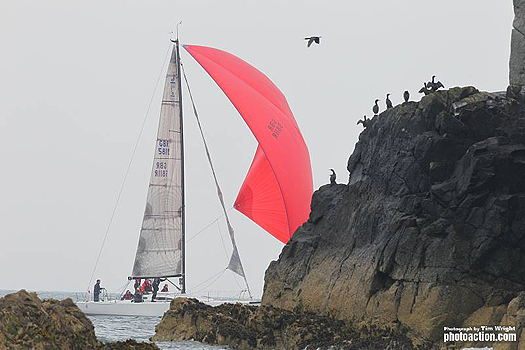
The Lombard Marine Finance J/97 UK National Championship fleet sailed three races on windward leeward courses and the competition was predictably fierce and hotly fought. Grant Gordon's Fever is leading the Nationals at the end of Day One having won the first two races and scoring a third in the final race of the day. His lead though is just one point over Tony Mack's McFly in second overall. Mike and Jamie Holmes took a little while to get Jika Jika driving as well as they they would wish but a bullet in the final race of the day saw them back to their usual top form. Stuart Sawyer and his crew on Black Dog, (all the way from God's Country, Cornwall) are just one point behind Jika Jika in fourth. The North Sails Boat of the Day prize for the Lombard Marine Finance J/97 UK National Championship was presented to Tony Mack's McFly.
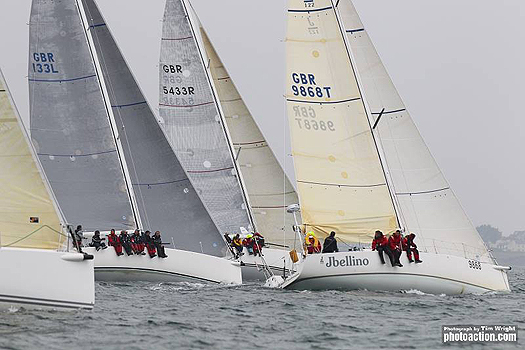
Class IRC 1 comprises J/122s, J/133s and two of the new J/111s. This fleet enjoyed a short jaunt around the cans in Little Russell followed by a coastal race around the island of Sark. Nigel and Donna Passmore won both races in their J/133 Apollo 3 and established a nice points lead on the next three boats in the class, which are all tied on eight points. The points count-back for these three boats puts Key Yachting's J/111 J Spirit (which is being helmed by St Peter Port local ace Jamie Hamilton) in second, Mick Holland and Carolyn Aylmer's J/122 MaJic (also from St Peter Port) is in third place and Rob Craigie's J/122 J Bellino (just back from the AZAB Race) is currently in fourth place. The North Sails Boat of the Day Prize for IRC 1 was presented to the crew of Apollo 3.
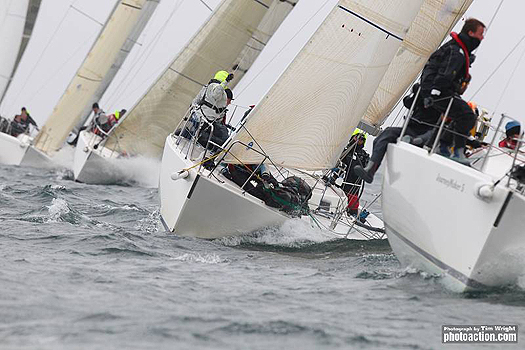
William Newton's J/105 Jelly Baby tops Class IRC 1 at the end of the first day of racing having scored two wins and Chris Jones and Louise Makin's J/105 Journeymaker is currently second in this class with six points. The J/105s love the windy stuff and enjoyed the planing conditions on Tuesday but here again, there are three boats all tied on six points. Andy Howe and Annie Kelly's J/92 Blackjack is third going in to the second day of racing and Marc Noel from St Malo also has six points on J/92 Dr Jekyll and is currently fourth. Two local J/24s, Alastair Bisson's Guffin and Tim Martin's Jaygo, have joined the J-Cup this year: the only time the regatta has ever included an entry from this first, iconic keelboat from the J Boats design office. Jelly Baby scooped the North Sails Boat of the Day prize in IRC 2.
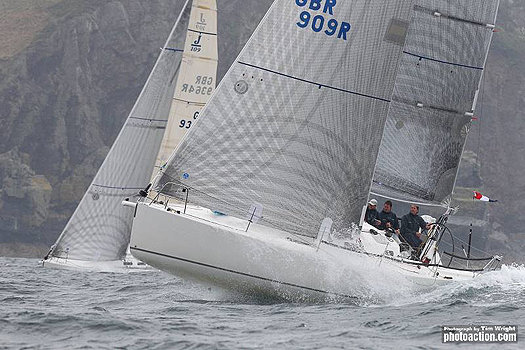
There is always much good natured rivalry in the J/109 fleet and the class enjoys close one-design racing in big fleets. This year we are especially entertained by the competition between local lad Mike Henning, racing on Jamie Arnell's Jeez Louise and his father Simon who has joined the crew of Roger Martel's Moojo, a well known St Peter Port J/109. Jeez Louise showed blistering pace and won both races on Tuesday, but yet again, the next three boats in this class are all tied on six points! Johnnie Goodwin and Bruce Huber are looking very good indeed on board Alexabelle in second, Tony De Mulder's Victric is third in class on count-back and then it's Moojo in fourth at the current point in time. There is obviously much to play for here. The crew of Jeez Louise were especially excited to receive the North Sails Boat of the Day prize after this stellar first-day performance.
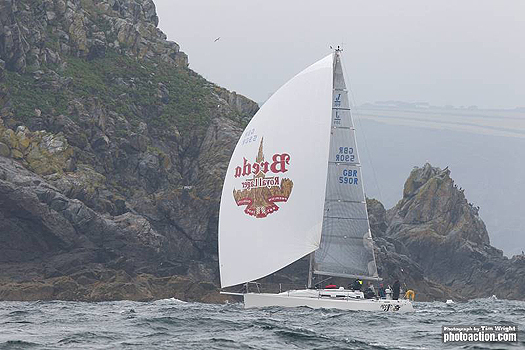
After racing, 350 J Boaters danced the night away to an awesome local folk band called The Barley Dogs fuelled by a curry at the Guernsey Yacht Club and some very potent cocktails courtesy of Universal Marina, one of the principal sponsors of the J-Cup. Racing at the J-Cup 2011 continues on Wednesday, and the forecast is for slightly less breeze and more sunshine
Kenefick's Tiger Fourth at Cowes Quarter Ton Cup
With two races completed at the end of Day 1, only 7 points separate the top 6 teams at the Coutts Quarter Ton Cup . Rob Gray's 'Aquila' holds the overall lead with a total five points, tied with Louise Morton's 'Espada' in second. Rounding out the top three just one point adrift of 'Espada' is Rickard Melander's 'Alice II', who holds a 4 point advantage over Cork's George Kenefick's fourth placed 'Tiger'. Fifth at the end of Day 1 is 'Cote' owned by Darren Marston & Ollie Ophaus.
Day 1 of the Cup dawned bright and clear but with an almost total absence of the most necessary ingredient for a sailing regatta - wind. With the glassy conditions meaning that there was very little chance of racing getting away at the scheduled 10.30 start time, Principal Race Officer Robert Lamb sensibly held the fleet ashore whilst he and his race team headed off onto the Solent in search of some sort of usable pressure. Having persevered in their quest for some several hours, Lamb and his team were eventually rewarded for their patience at around 14.00, when a pleasant 10 knot south westerly breeze materialised, enabling the eager fleet to finally put to sea for what turned out to be two excellent and closely fought races.

Tiger - Lying fourth in Cowes. Photo: Bob Bateman
Despite the wide range of sizes and designs making up the 30 boat fleet, the racing could hardly have been closer both on the water and on handicap, with every startline and mark rounding fiercely contested throughout the day. In Race 1, Louise Morton's 'Espada', (helmed at this event by Colette Blair standing in for the injured Morton) turned in a line honours performance in the first race, which was good enough to also give 'Espada' a corrected time race win by just under a minute. Second in that race was last year's Quarter Ton Cup winner 'Cote' owned by Darren Marston & Ollie Ophaus, who edged Sweden's Rickard Melander on 'Alice II' into third place by just 16 seconds on corrected time. Fourth was Rob Gray's 'Aguila', ahead of Ireland's Eamonn Rohan on Anchor Challenge.
Race 2 saw a compelling three-way battle for line honours between 'Aguila', 'Alice II' and George Kenefick's Irish entry 'Tiger'. 'Aguila' eventually prevailed to take the gun and a narrow 8 second corrected time victory over 'Tiger' in second and 'Alice II' in third. 'Espada' rounded out a solid day with a fourth place ahead of Ian Southworth's 'Whiskers'.
With two races completed at the end of Day 1, only 7 points separate the top 6 teams. Rob Gray's 'Aquila' holds the overall lead with a total five points, tied with Louise Morton's 'Espada' in second. Rounding out the top three just one point adrift of 'Espada' is Rickard Melander's 'Alice II', who holds a 4 point advantage over George Kenefick's fourth placed 'Tiger'. Fifth at the end of Day 1 is 'Cote' owned by Darren Marston & Ollie Ophaus.
As the fleet returned to the dock this evening, the smiles on the faces of the sailors was a clear indication of a fun day of Quarter Tonner racing. Having travelled from Russia to compete in Cowes this week with his French Quarter Tonner 'Bullit', Dmitry Borodin said that he had thoroughly enjoyed his first experience of racing in England. "To have the chance to sail here in Cowes is a real pleasure. There are so many fantastic boats and just being here in a town with this sort of sailing heritage is fantastic. On the water I think we have much to learn but we are enjoying our first Quarter Ton Cup and we will take the message back home with us. Hopefully in years to come there will be more Russian boats coming to sail in this regatta."
Colette Blair from 'Espada' declared herself happy with her team's first day performance. "We are fortunate that Espada performs well in all conditions, but today we seemed to be going well and we are pleased with the way we sailed." Blair also commented that Espada's only non-female crew member, mainsheet trimmer Stuart Childerley, had coped well with being the only man on-board. "It's great to sail with Stuart although I think he found the general conversation onboard today rather different to what he is used to."
Anchor Challenge's Eamonn Rohan, a first timer at the Quarter Ton Cup, had also clearly enjoyed his day on the water but was quick to pay tribute to the quality of the fleet. "This is the toughest Quarter Ton racing that we have done since we bought the boat. There are so many really fast boats and competitive crews sailing here this week, it's been a bit of an eye opener. We are having fun though and looking forward to tomorrow's racing."Despite lying in last place overall Richard Johnson & Sarah Lyle on 'Hannah J' were still amongst the most enthusiastic owners checking the results in the clubhouse after racing. "We had a great day out on the water and we are really pleased not to have finished last in the second race! Can you tell this is our first time? What we are really hoping for is an overall wooden spoon prize!" commented Sarah.
Racing at the 2011 Quarter Ton Cup continues tomorrow Tuesday 12 July with three more races scheduled. The regatta concludes on Wednesday 13 July.Winners Get Just Rewards at Kinsale's Sovereign's Cup
Some of last weeks ICRA Nationals were unseated in Kinsale yesterday when visiting boats beat Cork crews took fine wins at a blustery 2011 Sovereign's Cup.
Anthony O'Leary lifted the Sovereign's Cup trophy for the third time. He first won it in a 1720 sportsboat in 1996 on Ford Racing.
David Scott's EOS won the Portcullis trophy for the most consistent performance on ECHO handicap.
UK visitor Xpletive (Mike Crompton) was the winner of the inaugural Michelle Dunne Prix D'elegance trophy. The presentation of the award was made by Michelle's sister, Carrie Dunne. (See photos below)
The overall results show that Kinsale Yacht Club's staging of the Sovereign's Cup was one of the most demanding editions of the cup to date. One hundred cruisers participated in the four day regatta that experienced a wide range of conditions and ended yesterday in mist and fog, reducing visibilty down to 500 metres. Scroll down for selected results and prizegiving photography from Bob Bateman.
As widely predicted Anthony O'Leary's Antix prevailed in Class Zero with a winning marging of nine points over club-mate Jump Juice (Conor Phelan). Third place completed the Royal Cork wrap up of the 10-strong big boat class with Kieran Twomey's Corby 38 Glove's Off on 23 points.
In Class One David Scott's EOS maintained an early lead in his X 362 Sport to beat a trio of J109 designs.
11 points separated the local winner from Royal Cork's Jelly Baby (Ian Nagle). Former Royal Irish Commodore Peter Redden was third on Jetstream.
After a many successful years racing on the Shannon Estuary and West Coast, including winning WIORA in 2005, David Scott moved EOS to Kinsale to get more competition. With a composite Limerick/Kinsale crew, they have competed over the last five years in all major sailing events on the South Coast.
In class two, the vintage Dublin based Sigma 33 White Mischief, skippered by Tim Goodbody, completed a two week sailing odyssey firstly by retaining the national title on Belfast Lough on June 18. Her crew then embarked on a 48 hour trip south to win their class in the Sovereign's Cup, a remarkable achievement, given the recently crowned ICRA Class II champion, Allure (Brian Goggin, Kinsale) managed only fourth in class. Second overall was Yanks and Francs and third, Ian Byrne's Sunburn from Howth.
In class three, visiting Rob Gray's Aquila overhauled the impressive Tiger by three points. The Royal Cork champion lost out when Gray scored wins in the last two rounds.

Big seas for Exhale in Class One. Photo: Bob Bateman
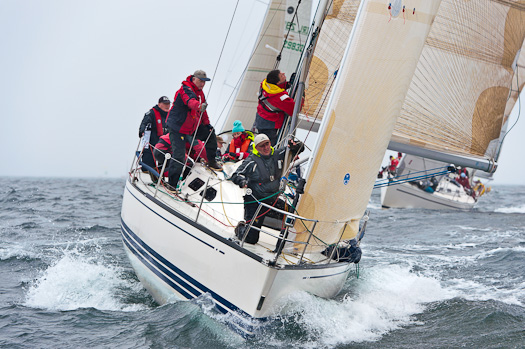
Portcullis Trophy winner EOS from Limerick prepares for a hoist. Photo: Bob Bateman
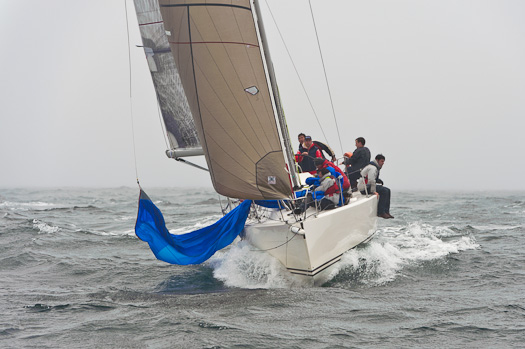
The J109 Jelly baby retrieves her Spinnnaker. Photo: Bob Bateman

Barry Hurley's Dinah. Photo: Bob Bateman
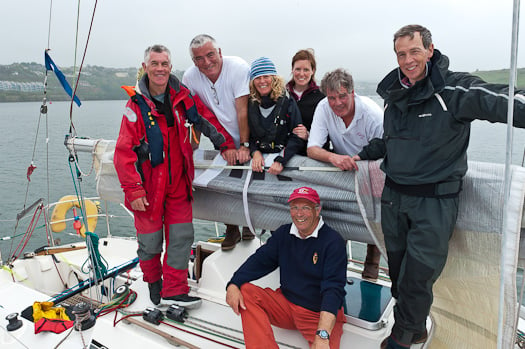
Round Ireland winners; last week Belfast lough, this week Kinsale. Tim Goodbody celebrates with his crew. Photo: Bob Bateman
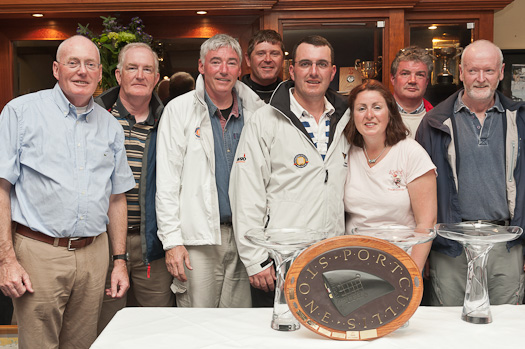
The EOS Crew with the Portcullis Trophy
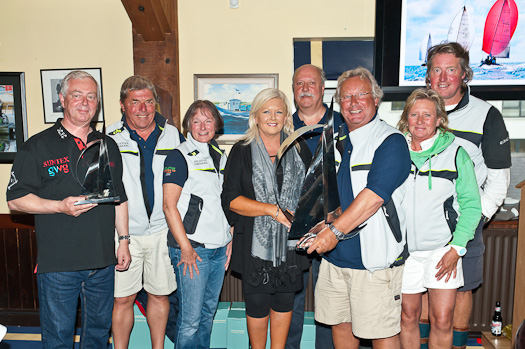
Xpletive (Mike Crompton) the winner of the inaugural Michelle Dunne Prix D'elegance trophy. The presentation was made by Carrie Dunne, sister of the late Michelle and was a very emotional moment for all present with the thunderous applause echoing this sentiment.
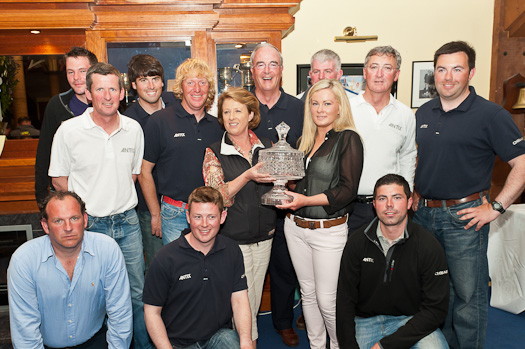
The Antix crew lift the Sovereign's Cup for the third time. Our Picture shows Sally O'Leary and Aoife English, crew member and daughter of well known sailor Joe English, proudly displaying the magnificent trophy surrounded by the Antix Team.
Photo: Bob Bateman
Southern Correspondent Claire Bateman adds:
Had to believe it's all over. On the last scheduled day of sailing the forecast was for a clearance to sunny spells and warm weather and while that happened in Cork and surrounds, it certainly did not happen in Kinsale where the fog and mist produced miserable conditions. Winds were 15 kts where the quarter tonners were sailing and out at the Sovereigns were 15 to 18kts or more. The day was not without its moments as crew member Frances Lynch from Jump the Gun went for an involuntary swim off the side and was plucked from the water by Martin Darrer's True Pennance racing in the immediate vicinity. The J109 Jedi had a handling error with the spinnaker and they ended up doing a bit of trawling while Crazy Horse had a broach that resulted in a torn spinnaker.However, this was the day for results and every boat in the fleet was out to perform to their highest ability. Some were going out knowing they were not in with a chance to win but nonetheless might improve their placing, others were going in the knowledge this might be their lucky day if things were to go their way but for sure nobody knew for certain was was going to happen in the fiercly fought Quarter Ton class. In the end it was to be a most decisive two bullets on the day that secured the trophy for the popular visiting boat, Rob Gray's Aguila. However, the full results are documented and are worth having a good look at to see how close the competition was in the different classes and how all the various good fights were won and lost.
The prize giving was most eagerly awaited and the mist shrouded club and grey evening did nothing to dampen the enthusiasm of the patiently waiting competitors and helpers. After all, who was to going to be awarded the Michelle Dunne Prix d'Elegance, The Sovereign's Cup or Portcullis Stone (known as trophy). Incidentally, on studying this beautiful piece of work it is actually titled Portcullis Stone. Secretly, every skipper present was hoping to be the lucky recipient of one or other.
At last the moment arrived and when presentations of the class trophies had been completed by Ross O'Leary of MGM Boats, John Stallard representing Eli Lilly and Club Commodore Alice Kingston, it was time for the big one.
The Michelle Dunne Prix d'Elegance trophy was awarded to British visitor Mike Crompton in Xpletive and was presented by the Late Michelle's sister, Carrie, on behalf of the Dunne family. The Port Cullis Stone for the best perceived performance in ECHO was awarded to David Scott's EOS and the Sovereign's Cup for the best performance in IRC was awarded to Anthony O'Leary's Antix. These three awards are decided on by a Regatta Committee decision.
The bemused British visitors on Xpletive were not fully aufait with the significance of the Prix d'Elegance Trophy. Anthony O'Leary in his acceptance speech for the Sovereign's Cup paid a very fitting tribute to Michelle and when Xpletive crew members became fully aware of the story behind the Prix d'Elegance they were visibly moved and thrilled to have been selected.
Now it is time to move on. The visitors are getting ready to pack up and leave, Peter O'Leary has left since Friday to travel to Fuerteventura for fitness training in his Olympic programme in the Star Class, John Twomey in Shilleagh in on his way to Weymouth to seek his qualification in the Irish paralympic team also for Weymouth 2012 and George Kenefick of Tiger is on his way to Cowes.
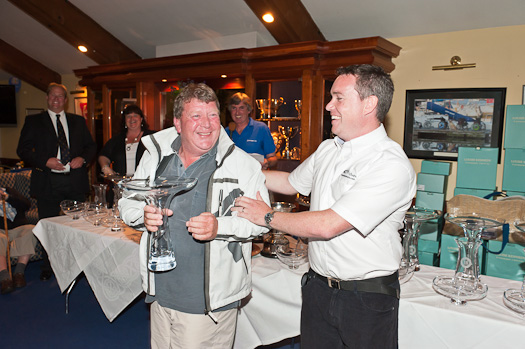
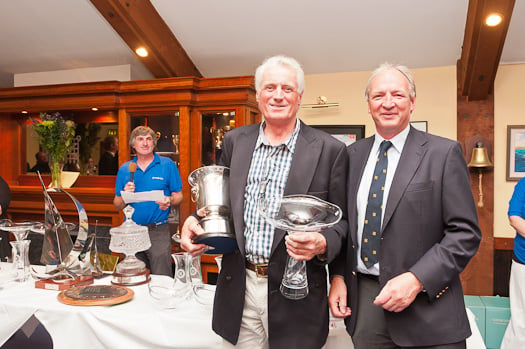
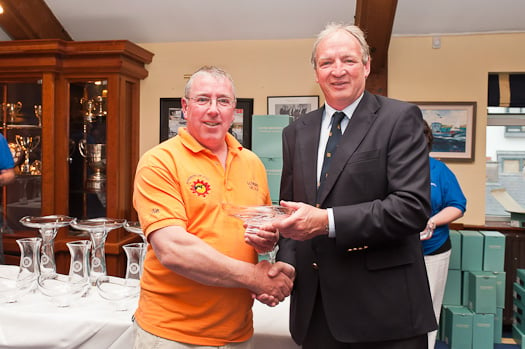

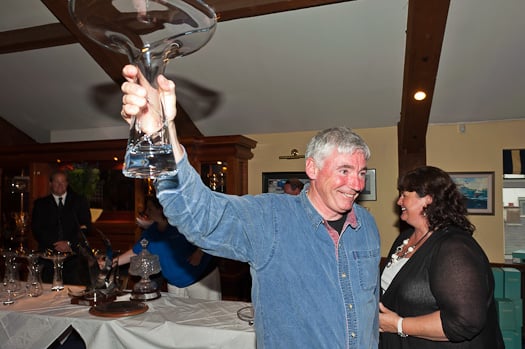
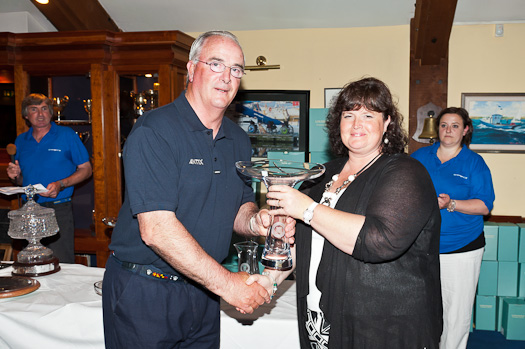
Cruiser Racers Head for Royal Cork
Simon McGibney of WIORA confirmed there are already at least 15 boats interested in travelling to the event to join with the Cork, Kinsale and East coast boats. There is also the tantalising prospect of the fleet being joined by no less than ten quarter tonners from the UK who also plan to sail in the Sovereign's Cup at Kinsale the following week. Most of these British boats are crewed by professionals and will race with the Irish Class three fleet. They will, however, be scored separately and will receive a separate trophy.
Sailing with the Quarter Ton fleet will be Anchor Challenge, beautifully restored and modified by former owner Peter Morton, and now in the ownership of Eamon Rohan. At the weekend our spy spotted an all white gleaming boat wending its way up the Kinsale Road and wondered could this possibly have been Anchor Challenge and, if so, will we see a battle between the all black Tiger and the all white newcomer??
For the duration of the ICRA National Championships there will be subsidised launching at Ringaskiddy for all trailerable boats. In addition a very attractive accommodation package has been arranged for all ICRA competitors at the Carrigaline Court Hotel. They are offering three nights B/B plus one evening dinner from Thursday to Saturday and free B/B for Sunday night at €129 per person sharing.
A crew list has been set up by RCYC for skippers wishing to acquire crews with local knowledge and Race Officers for the event will be the hugely experienced Peter Crowley and Richard Leonard.
ICRA Commodore Barry Rose was delighted to inform the meeting that Yacht Designer Mark Mills has joined the ICRA committee where his expertise and wide knowledge will be greatly appreciated. Mark gave a most interesting report on recent developments re racing matters. One item referred to the fact that boats with bulb keels will now be more severely rated and another item of interest is discussion going on with regard to changing the rating bands for the 2012 Commodores Cup. It is believed there is a move afoot to lower the bands i.e. the current middle rated boat may be the big boat for the 2012 event.
Historic Trophy for South Pacific Dream Cruise
Fergus and Kay Quinlan live in the Burren in County Clare, and in 1997 they launched the steel van de Stadt 12-metre cruiser Pylades, which they'd built themselves. They've made several voyages and have been in the Irish Cruising Club's award list before. But at the ICC's AGM in the National YC on February 18th they deservedly got the big one, the Faulkner Cup, for the first stage of a global circumnavigation which began from their home port of Kinvara in the summer of 2009, and a year later they'd reached Tahiti.
Their cruise continues, so the award was made in absentia. Adjudicator Brian Cudmore of Cork made the point that their informative log included much general and often entertaining information, and it becomes even more interesting the further you got into it, so he's keenly anticipating the next inmstalment.
The Strangford Cup for an alternative best cruise could not have been more different, both in location or boat type. The 44ft Young Larry may have been built of steel in 1995, but she was based fairly precisely on the design of a gaff cutter built in 1907. And though the rig has been made more manageable through being a yawl, even the mizzen is gaff-headed, while the main sets a topsail. Not the most-easily handled rig for challenging seas, you might well think, but Maire Breathnach (originally from Dungarvan) and her partner Andrew Wilkes, crewed by Maire's niece Sibeal Turraoin, took Larry Og – which looks for all the world like a smaller Asgard I – right through the Northwest Passage to Alaska, an extraordinary one-season achievement.
The ICC members logged some other notable Atlantic voyages, with Michael Coleman of Cobh, a Port of Cork Pilot before he got the free bus pass, making a fine Atlantic triangle to the Azores, then Newfoundland, and so home to Cork, visiting many islands with his well-found 1988 Oyster 53 Oyster Cove. It was all done with a crew of average age 66, senior member Tom Noonan aged 76, and worthy winners of the Atlantic Trophy.
Over the years since its foundation in 1929, the Irish Cruising Club has become the trustee and adjudicator of many trophies, twenty in all, and two of them were special presentations in 2010. The Donegan Memorial Trophy went to Ruth Heard, an ICC member since 1967. She has cruised both to the Azores and Iceland, but is honoured this year in celebration of her remarkable contribution to the rebirth of the inland waterways, and to mark the re-opening of the Royal Canal. Ruth Heard was on the crew of Harklow, the last boat to transit the Royal in 1954 before its half century of official closure which was gloriously reversed in 2010.
And once upon a time, the ICC was the organiser of Ireland's Admiral's Cup campaigns. Though many members still race offshore as individuals, the club has long since focused totally on cruising. But it has a general trophy, the John B Kearney Cup for Services to Irish Sailing, and for 2010 it was awarded with acclamation to the successful Irish Commodore's Cup Team.
- Faulkner
- Cruise
- Cruising
- Cup
- Club
- Quinlan
- Kay
- Fergus
- ICC
- National
- yacht
- cub
- YC
- Cudmore
- Cork
- Breathnach
- Alaska
- Asgard I
- Strangford
- Burren
- Pylades
- Northwest
- Passage
- Wilkes
- Sibeal Turraoin
- Coleman
- Atlantic
- Cobh
- Newfoundland
- Oyster Cove
- Oyster
- Donegan
- trophy
- Ruth Heard
- John B Kearney
- Cup
- Commodore's
- gaff






























